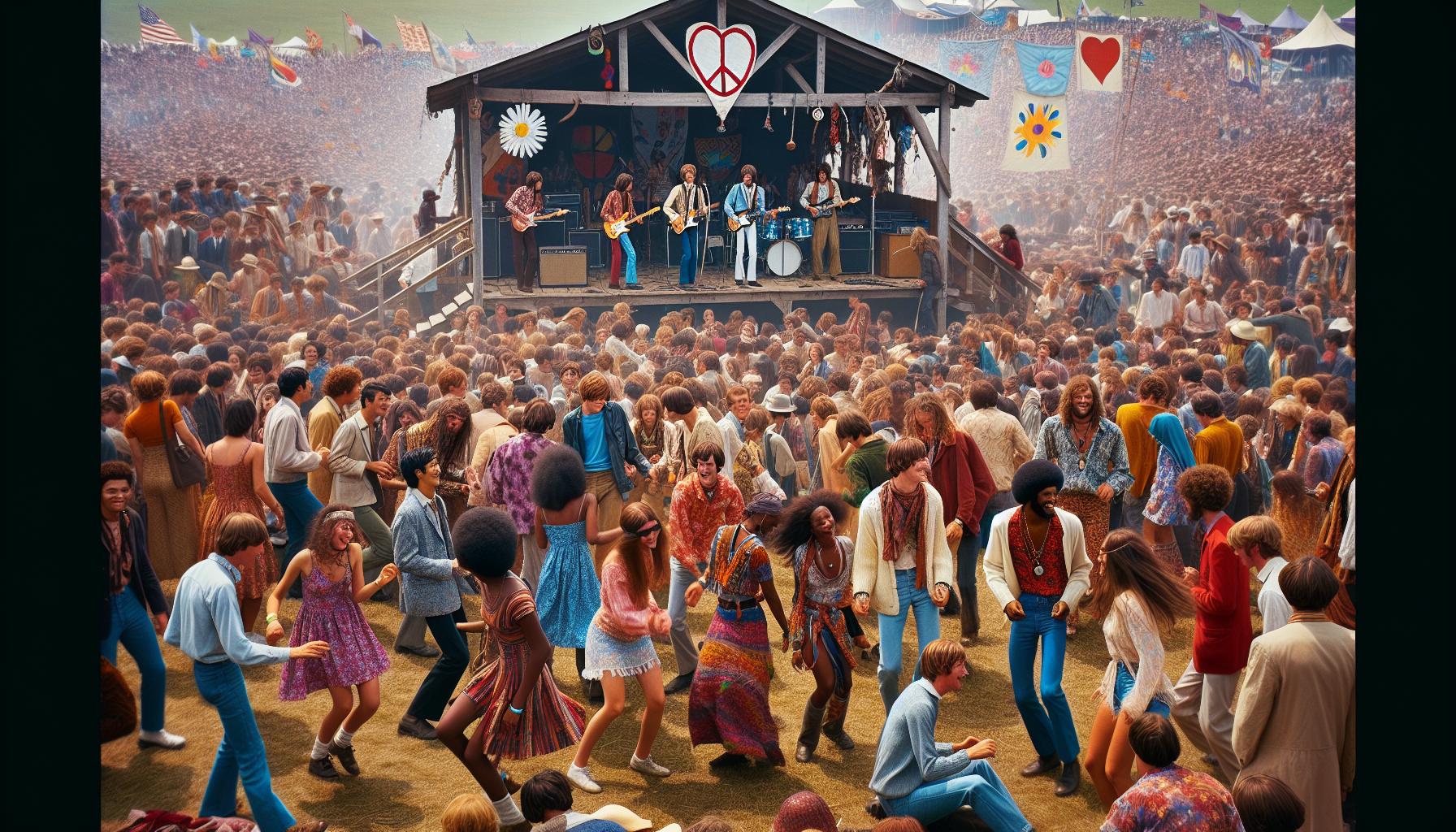Rock and roll music isn’t just a genre; it’s a way of life. From the electrifying riffs to the powerful lyrics, it captures the spirit of rebellion and freedom that resonates with so many of us. I’ve always found myself drawn to its raw energy and the stories it tells, making it impossible to resist. Whether it’s the classic hits of the ‘60s or the modern interpretations, rock and roll has a unique ability to connect generations. It’s more than just sound; it’s an experience that ignites passion and nostalgia. Join me as I dive deeper into the world of rock and roll music and explore what makes it so special to me and countless others.
- Cultural Significance: Rock and roll music emerged in the 1950s and played a pivotal role in shaping societal narratives during the 1960s, reflecting themes of rebellion and individuality.
- Iconic Track: “I Dig Rock and Roll Music,” popularized by Peter, Paul and Mary, serves as a celebration of the rock genre, highlighting various influential artists while offering humorous commentary on the music industry.
- Genre Evolution: The 1960s marked a transformative period in rock music, giving rise to diverse subgenres and reflecting major cultural shifts like the civil rights movement and the counterculture revolution.
- Musical Composition: The song blends folk, pop, and rock influences, characterized by catchy melodies and lively instrumentation, showcasing the experimental spirit of the era.
- Enduring Legacy: Rock and roll continues to influence generations of musicians, fostering creativity and authenticity while remaining relevant in contemporary music landscapes.
- Commercial Success: “I Dig Rock and Roll Music” achieved notable chart success, peaking at number 9 on the Billboard Hot 100, illustrating the genre’s popularity and impact during the 1960s.
I Dig Rock and Roll Music
“I Dig Rock and Roll Music” is a track that encapsulates the spirit of the 1960s rock scene. Written by Joe South and popularized by Peter, Paul and Mary, the song reflects a deep appreciation for rock music, celebrating its cultural impact and musical diversity. It showcases various artists, including Bob Dylan, and emphasizes the genre’s role in shaping societal narratives.
The lyrics blend humor and satire, presenting a commentary on the music industry’s changes during that era. Listeners connect with its catchy melody and clever wordplay, which highlight rock music’s evolving landscape. Themes of freedom, individuality, and rebellion resonate through the song, reflecting the broader context of the 1960s social movements.
The track’s lively instrumentation and harmonies create an inviting listening experience, blending folk and pop elements with rock influences. It serves as a testament to the musical landscape of the time and remains relevant as rock music continues to influence new generations. This appreciation for the genre fosters a sense of nostalgia and passion among fans, reminding them of the timeless qualities that define rock and roll.
Historical Context

Rock and roll music emerged in the 1950s and carried significant cultural weight through the 1960s. Understanding this historical backdrop reveals how it shaped and transformed the music scene.
1960s Music Scene
The 1960s marked a pivotal era in music history. Rock and roll transitioned from its early roots into diverse subgenres, reflecting societal changes. Artists like The Beatles, Bob Dylan, and The Rolling Stones redefined musical boundaries. The British Invasion shifted focus, bringing British bands to the forefront, while American artists explored new sounds, blending genres. Festivals like Woodstock in 1969 symbolized unity and counterculture, cementing rock’s role in expressing social issues such as civil rights and anti-war sentiments. The decade also saw the rise of various influential movements, making rock music a powerful voice in cultural discussions.
Cultural Influences
Cultural shifts in the 1960s greatly influenced rock and roll music. The civil rights movement sparked conversations about equality, which music artists echoed in their lyrics. The counterculture revolution encouraged freedom of expression, resulting in an experimental approach to songwriting and performance. As artists embraced themes of rebellion, love, and individuality, the genre began attracting a diverse audience. Additionally, technological advancements in recording and broadcasting allowed rock music to reach wider audiences, ultimately helping it define an era. The song “I Dig Rock and Roll Music” exemplifies these cultural themes, showcasing humor and satire while highlighting the variety of influences that characterized the music scene.
Analysis of the Song

The song “I Dig Rock and Roll Music” offers a rich tapestry of themes and musical elements that resonate deeply with the cultural landscape of the 1960s.
Themes and Lyrics
The lyrics provide a playful yet pointed commentary on the music industry and its evolution. Themes of nostalgia, individuality, and social commentary appear throughout the song. The humor highlights the quirks of various artists, including Bob Dylan and The Beatles, showcasing their influence on rock music.
Clever wordplay and lighthearted jabs at the music scene evoke both admiration and critique, addressing how commercial interests sometimes overshadow genuine artistry. The celebration of diversity shines through, recognizing the various genres that blend into rock music, adding layers of depth and meaning to the listening experience.
Musical Composition
Musically, “I Dig Rock and Roll Music” blends folk, pop, and rock influences, creating a catchy, upbeat melody that captivates listeners. The lively instrumentation features harmonious vocals, drawing on the distinct folk roots of Peter, Paul and Mary. The arrangement utilizes guitars, drums, and harmonicas, reflecting the dynamic sounds of the era.
Distinct shifts in tempo and rhythm enhance the song’s playful nature, mirroring the thematic contrasts in the lyrics. Its blend of genres not only showcases the versatility of rock music but also reinforces the broader cultural influences at play during the 1960s. The overall composition stands as a testament to the collaborative spirit and musical experimentation characteristic of the time.
Impact and Legacy

The impact of rock and roll music transcends generations, shaping cultural movements and influencing musical evolution. Two key aspects of its legacy involve chart performance and the influence it has on future artists.
Reception and Chart Performance
“I Dig Rock and Roll Music” garnered significant attention upon its release in 1969. The song achieved a peak position of number 9 on the Billboard Hot 100 chart, solidifying its place in the popular music landscape. The catchy melody and relatable lyrics resonated with audiences, reflecting the spirit of the era and contributing to its commercial success. Its reception exemplified the appetite for rock music during the 1960s, showcasing the genre’s evolution and versatility.
Influence on Future Artists
Rock and roll music laid the groundwork for countless artists across various genres. Its emphasis on authenticity and storytelling inspired musicians like Bruce Springsteen and Joan Jett. Many artists attribute their creative expression and musical techniques to rock and roll’s foundational elements. The genre encouraged experimentation, leading to significant innovations in sound and style. I recognize how artists continue to draw inspiration from the themes and influences of rock music, ensuring its enduring legacy.
Rock and roll music isn’t just a genre for me; it’s a vibrant tapestry of emotion and history that captures the essence of freedom and rebellion. The song “I Dig Rock and Roll Music” perfectly encapsulates this spirit, reminding us of the cultural shifts that shaped an entire generation.
As I reflect on the profound impact of rock and roll, I can’t help but feel a connection to the artists who dared to push boundaries and challenge norms. Their legacy continues to inspire me and countless others, proving that the heart of rock music beats strong even today. Embracing this genre means embracing a way of life that celebrates individuality and creativity.



